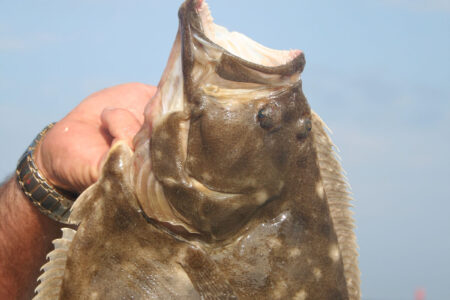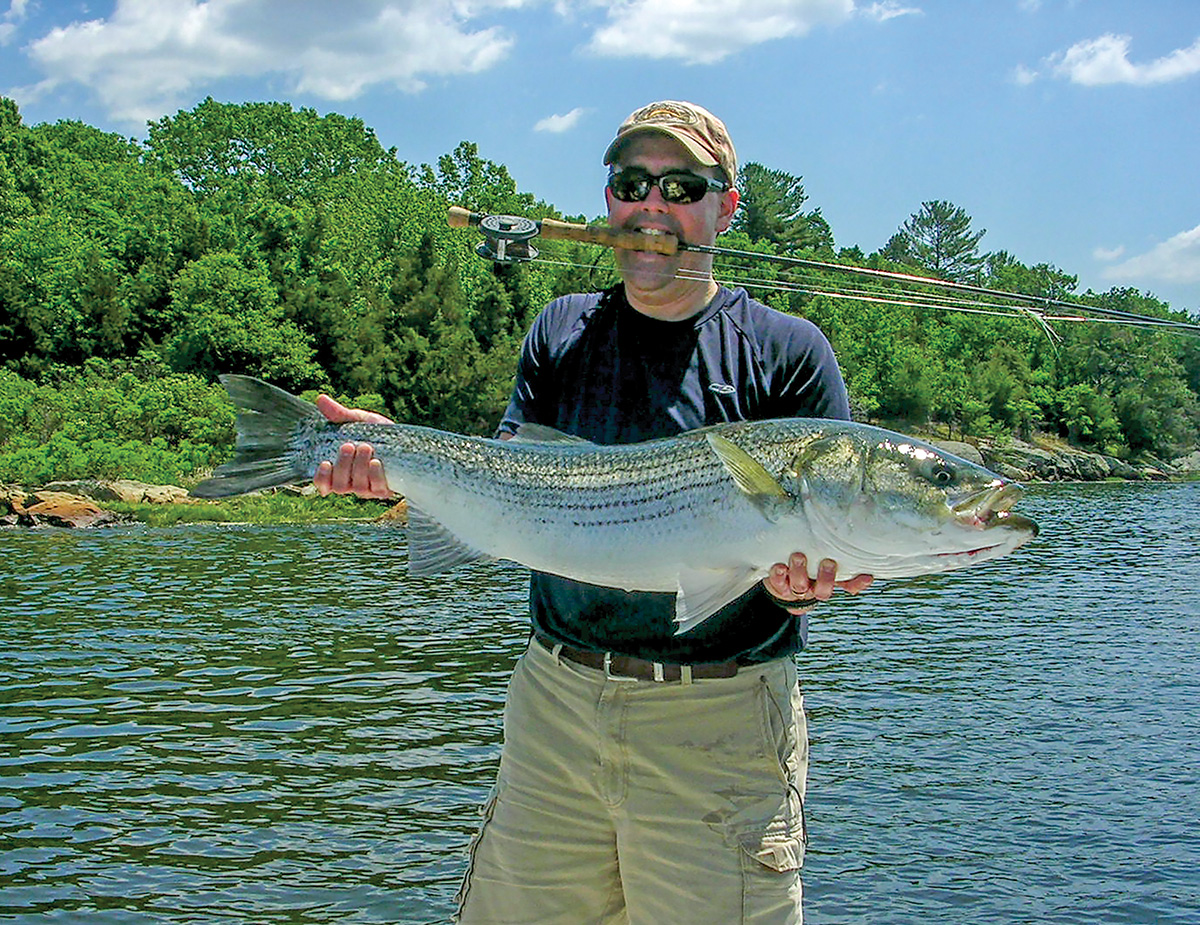
The Merrimack River along the north coast of Massachusetts empties into the Atlantic Ocean between the jetties at Plum Island and Salisbury Beach. The Merrimack stretches inland for over 100 miles to its beginnings at the confluence of the Pemigewasset and Winnipesaukee rivers in Franklin, New Hampshire. It is home to several dozen native species of sweetwater fish as well as numerous anadromous and migratory species including the striped bass.
Typically, by the beginning of May, migrating hordes of schoolie stripers have reached the Merrimack River mouth and are immediately drawn to the warmer water flowing into the ocean as well as the distinct aroma of baitfish. It is no wonder that this fabled watershed attracts many anglers in search of a bent rod. The river mouth is flanked on both the north and south sides by stone jetties. This jetty system funnels the tremendous volume of water and sediments seaward creating huge swells as well as standing waves that can sometimes reach 15 feet or more from trough to crest. These river sediments have created a series of sand bars that extend outward and to the sides for nearly a quarter mile. It is these sandbars, along with tide currents, that create the rough water and also the bottom structure that attracts both baitfish and stripers. The primary baitfish found at the river mouth is sand eels, by the thousands, and at other times mackerel, squid and silversides.
The river mouth is a big draw for many anglers using myriad striper-catching tools, from flies to bait and everything possible in-between, too many to cover here. It is easier to describe what hungry schoolies won’t eat! So no matter what method you enjoy for catching schoolies, it should work well at the river mouth.
The quickest way to locate feeding stripers is look up, and the abundant sea birds will lead you to the action. If no birds are present, use your sonar to locate bait balls. My favorite baits include flies, topwater plugs and soft plastics with or without added weight. The “catching” is very much dependent on tide flow and fishes best on the dropping tide especially while drifting between the jetties and out along the current edges. The downside is that the falling tide is also the most treacherous with respect to swells and standing waves. It is not a place for the inexperienced boat handler. The rising tide is also productive while drifting up current along the back sandbars and into the river mouth. The swells and waves are not usually an issue, but care and attention must be a priority. Most boat anglers at the river mouth choose either cut baits while drifting or slow trolling live mackerel as their preferred catching techniques.
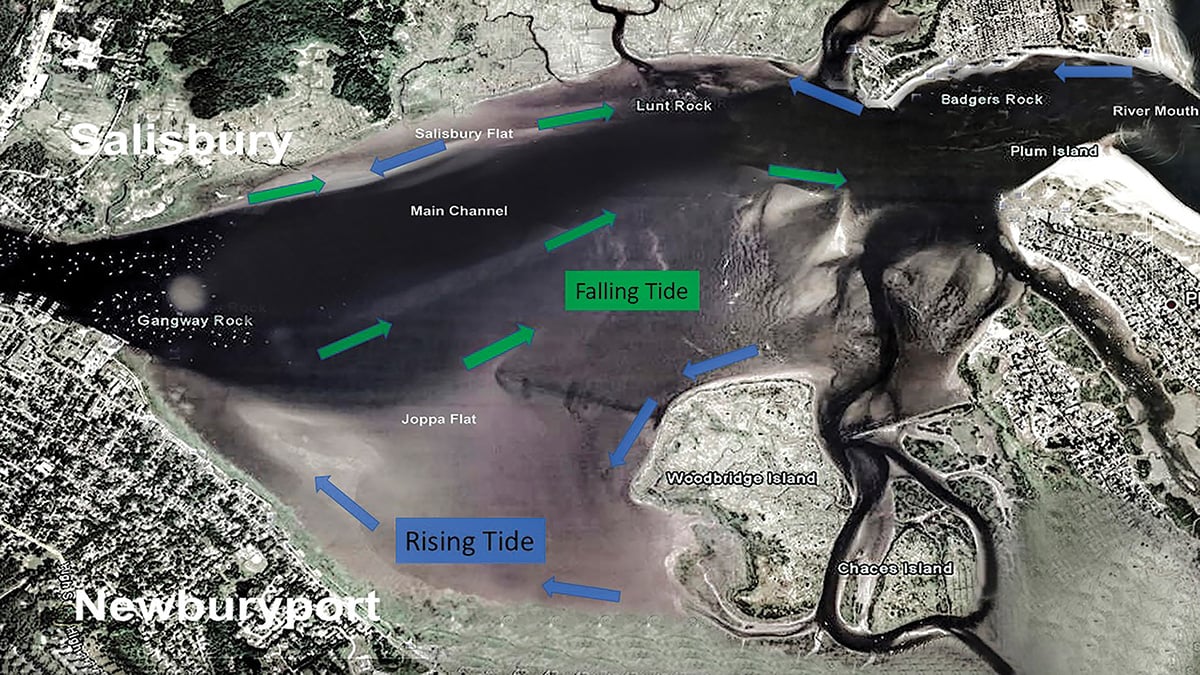
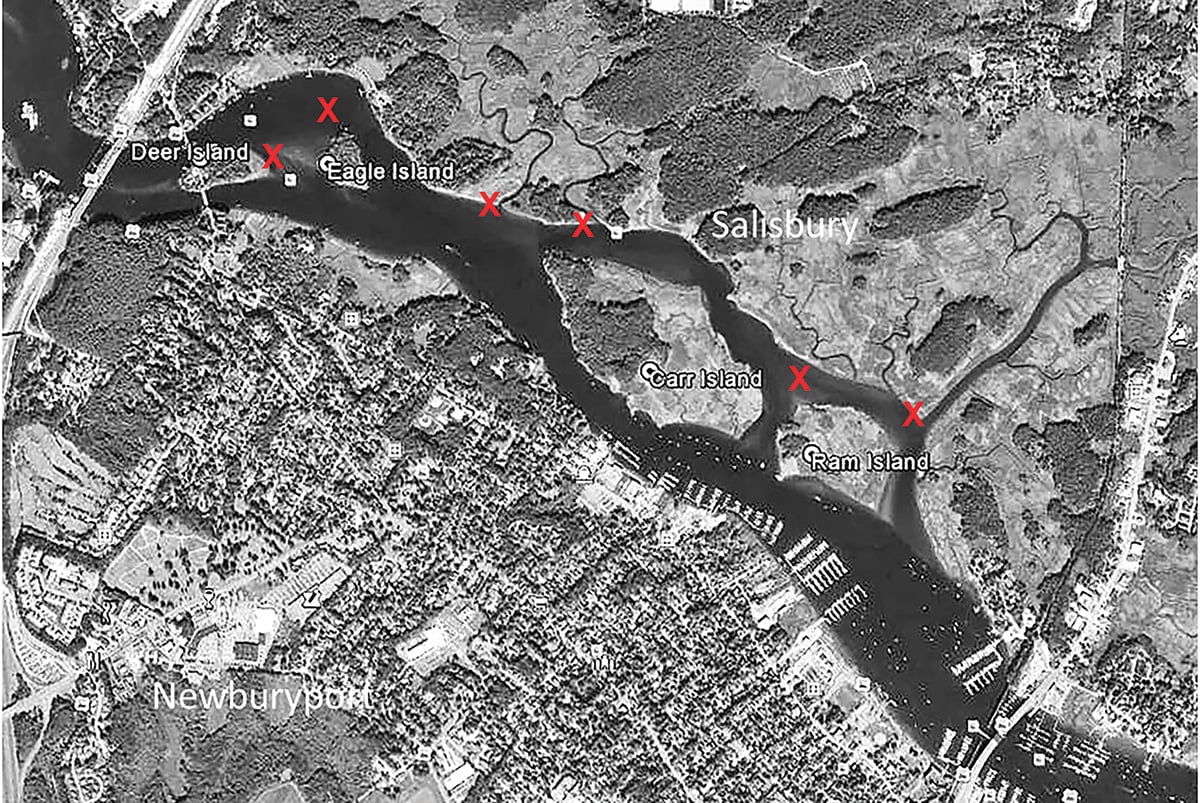
Surfcasting from the stone jetties can also be productive using baits or artificial choices. But again, venturing out onto the jetties can be extremely dangerous depending on tide current and ocean state. The north jetty was recently re-built and is more angler friendly with regard to height off the water as well as a flatter top surface for better footing. The better and safer surf fishing areas near the river mouth are at Plum Island Point at the north end of the island and Salisbury State Park. Both areas lend themselves to both baitfishing and artificial offerings.
Moving upriver from the river mouth the open expanse of the estuary becomes visible with Joppa Flat to the left and the Salisbury Flat on the right. The navigation channel is well marked with red and green channel markers and it is advisable to honor the channel markers especially at low tide as shallow water and rock hazards are present. The first-time-boaters should study a navigation chart to familiarize themselves with the area.
Any sand eels that may have come upriver on the tide rise will be anxious to leave with the lowering water depth, and as such are more likely to become striper food. River herring and American shad that have come in with the tide will continue their journey upriver and generally do not stay in the estuary very long. Both flats provide a good deal of native food items for the hungry stripers that include clams and sandworms. The estuary offers a relatively safe fishing environment and is well protected from ocean effects. However, attention is necessary with regard to boat traffic coming and going. Boat and kayak access is good with boat ramps at Salisbury State Park and Cashman Park in Newburyport. Shore access to the flats is quite limited and generally not worth the effort because of private property concerns, tidal effects and walking distances.
Both flats can be fished on either tide provided that at least two hours of water depth are present to avoid running aground. However, the falling tide produces better catching opportunities primarily because of the increased current flow (combined tide and normal river flow) and warmer water. During June, the estuary is a very busy body of water with any number of anglers using a variety of methods to get tight. There will be boats anchored up along the channel edges fishing bait on the bottom while other anglers choose trolling methods along the channel edges with tube ‘n’ worm rigs, live mackerel or shallow running plugs. For me and most seasoned Joppa anglers, the best method is drifting the flats while casting flies, plugs, jigs, soft plastics and drifting seaworms. The drift method allows the angler to cover a great deal of water while maintaining a desired water depth on the flat and doing it quietly with the engine off. My choice of best baits include: topwater spooks in bone (Jumping Minnow), small pencils in white or yellow (Gibbs, Workhorse, 247, After Hours), shallow-running stick baits (SP Minnow), white bucktail jigs tipped with grub tails, soft plastic swim baits in white and olive (Hogy, Slug-Go) and baitfish-patterned flies with full-sink fly lines on the falling tide and intermediate lines on the rising tide (8- to 10-weight rods).
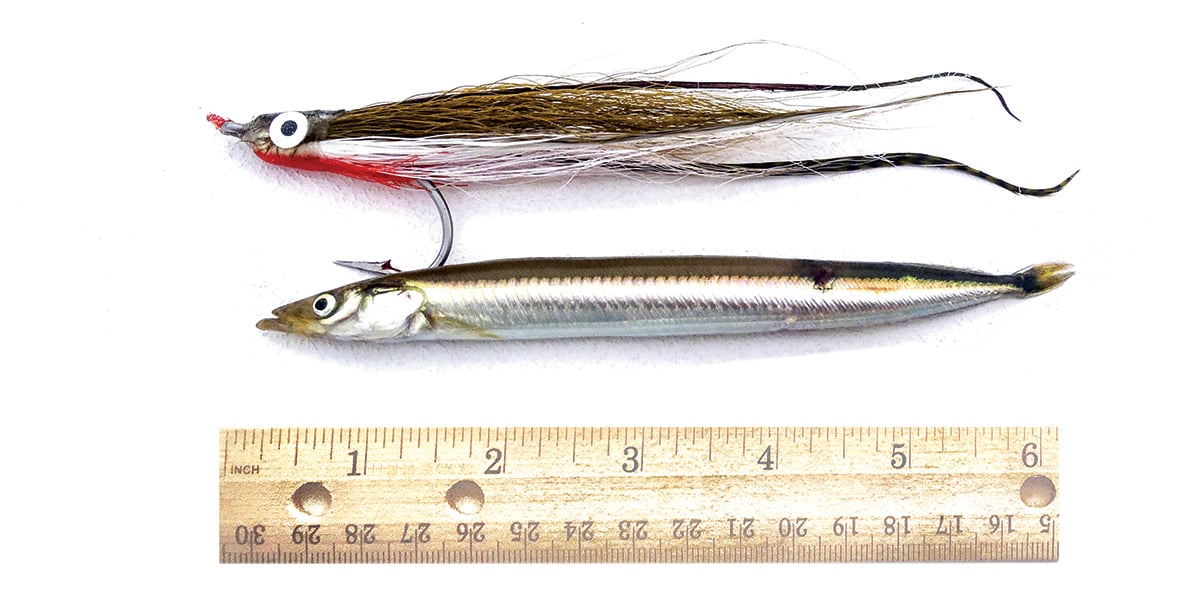
Whatever your choice of catching method, learning the flats is essential for doing well. Being in the right place during the tide cycles is a good first step to gaining experience. My reference diagram will be helpful for the newcomer. The blue arrows indicate catching locations on the rising tide, starting near the Badgers Rocks and working upriver with the tide. The Green arrows indicate catching locations on the falling tide, starting near Gangway Rocks and moving downriver toward the mouth as the tide drops. Hopefully this diagram will help get you catching on the flats.
During June, the American shad and river herring are making their way upriver to their spawning water. Striped bass of all sizes, from small schoolies, to large cow bass pushing 50 pounds, will not be far behind.
Fishing between the bridges is excellent from mid-May through June. Best fishing times are a few hours either side of high tide. Catching method is a matter of preference, flies and light tackle choices get it done. Most light-tackle boat anglers set up tide drift lines adjacent to the grassy river banks and target water depths of 5 to10 feet. It is also productive to target current seams away from the bank.
The same tackle choices previously mentioned get you tight between the bridges as well. Toward the end of June, live bait fished in the deeper channel water (10 to 25 feet) is an excellent choice for big bass. Mackerel, pogies and live eels (by night) are the choice baits. Remember, using river herring is not allowed. Access to this part of the river is quite good with the town run boat and kayak launch ramp at Cashman Park, Merrimac St., Newburyport and for shore anglers, Deer Island Park at the Chain Bridge has ample parking and accessible shoreline.

